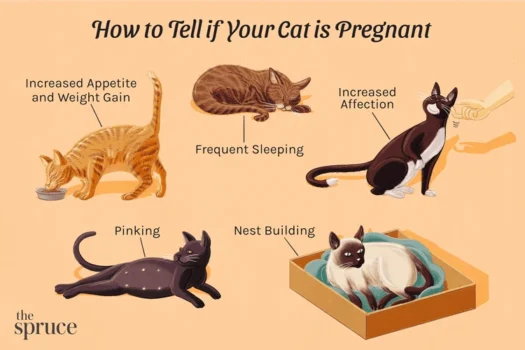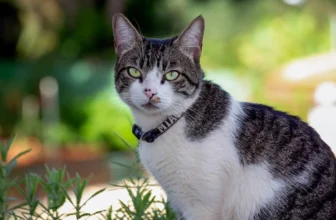Introduction
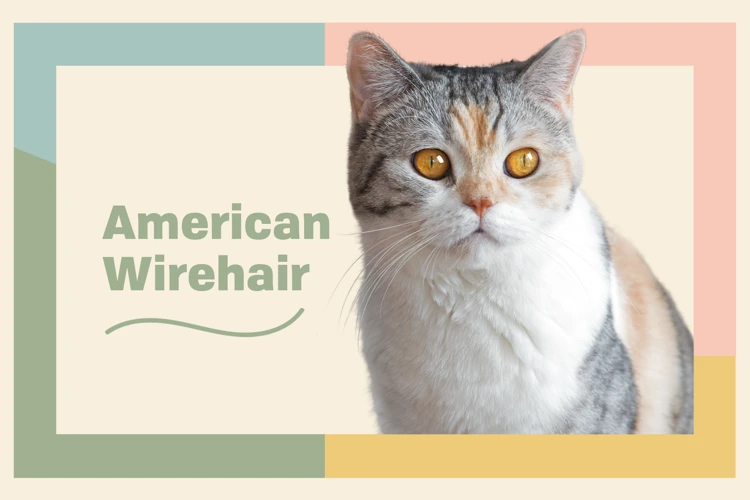
Welcoming a new litter of kittens into the world is an exciting and momentous occasion, especially if you’re the proud owner of an American Wirehair cat. Pregnancy can be an exhilarating experience for both pets and owners alike, but it requires a great deal of care and attention to ensure that your cat has a healthy and safe pregnancy. In this article, we will take you through the various stages of pregnancy that your American Wirehair cat will experience, as well as provide you with tips on how to properly care for your pregnant cat and her newborn kittens. So, let’s dive into this fascinating journey of feline reproduction!
About American Wirehair Cats
American Wirehair cats are a unique breed known for their distinct wire-like coat texture. They are playful, affectionate, and make great companions for families with children or other pets. Here are some interesting facts about these cats:
- Origin: The American Wirehair is a relatively new breed that originated in upstate New York in the 1960s. A stray cat with a wiry coat was found in a barn, and the breeder who adopted her decided to breed her with an American Shorthair to create the American Wirehair breed.
- Coat: The American Wirehair’s coat is unique in its texture, which is springy, coarse, and crimped. The breed also comes in a variety of colors and patterns, including tabby, solid, and bi-color.
- Health: As with any breed, American Wirehairs can be prone to certain health issues such as hip dysplasia and hypertrophic cardiomyopathy. It is important to research potential health problems and find a reputable breeder who does genetic testing on their breeding cats.
- Breeding: Breeding American Wirehairs requires careful consideration and planning. It is important to select a breeding pair based on health, temperament, and conformation to breed standards. Responsible breeding practices and regular veterinary care can help to ensure healthy litters.
For more information about breeding American Wirehairs, including genetic considerations and breeding tips, check out our article on Wirehair Breeder Tips.
The Stages of Pregnancy in Your American Wirehair
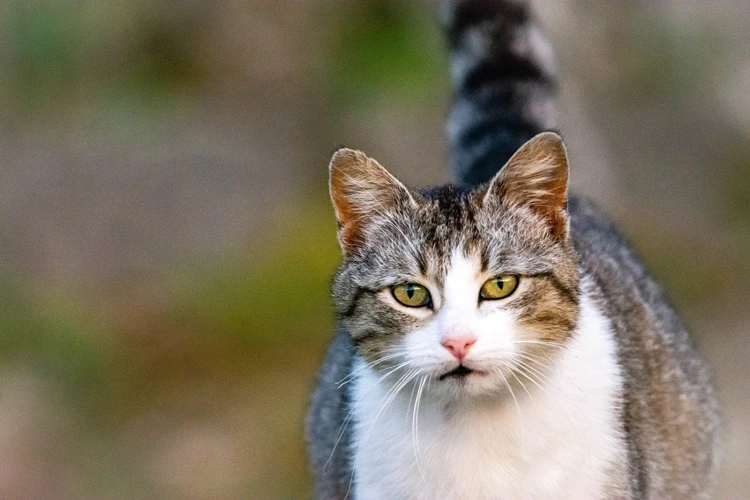
As an American Wirehair cat owner, it is important to understand the various stages of your cat’s pregnancy. This knowledge can help you provide the best care possible for your beloved pet as they embark on this exciting journey. From the initial stage of conception to the final stage of delivery, each step is crucial for the health and well-being of your cat and her kittens. To ensure a successful pregnancy, it is important to have a clear understanding of what to expect during each stage. If you’re just getting into breeding with American Wirehairs, check out our article on selecting the right breeding pair of American Wirehairs for more information.
Initial Stage
The initial stage of pregnancy in American Wirehair cats is an exciting time. During this stage, the female cat’s body begins to prepare for fertilization, and the male cat’s sperm is traveling toward the eggs. This stage lasts for about one to two days, but it can be hard to tell exactly when it starts.
Signs of the initial stage: The only way to be sure that your American Wirehair cat is in the initial stage of pregnancy is by monitoring her behavior and watching out for any physical changes. During this stage, cats may not show any obvious signs of pregnancy, so it’s important to pay attention to subtle changes.
Behavioral changes: If your normally vocal American Wirehair cat becomes quiet and seeks more attention, it may be a sign that she is in the initial stage of pregnancy. Some cats may become clingy or have a decreased appetite during this time.
Physical changes: The physical changes that occur in the initial stage of pregnancy can be difficult to detect, but there are some subtle signs to look out for. Your cat’s nipples may become slightly swollen and more prominent during this stage. You may also notice a slight increase in her appetite.
It is important to note that during this stage, there are no pregnancy tests that can accurately determine if your cat is pregnant. It is best to wait until the middle stage of pregnancy to visit a vet for a definitive diagnosis.
During the initial stage of pregnancy, it is crucial to ensure that your American Wirehair cat is healthy and not suffering from any breeding-related diseases. You can learn more about breeding and diseases associated with it in our article “American Wirehair Breeding Diseases”. If you are considering breeding American Wirehairs, it is also important to familiarize yourself with genetics and coat colors, which you can learn more about in our articles “American Wirehair Coat Colors” and “American Wirehair Genetics.” Additionally, it is important to practice responsible breeding, which you can read more about in our article “Responsible Breeding for American Wirehairs.”
Middle Stage
At the middle stage of pregnancy, the American Wirehair cat’s belly will become more prominent as the fetuses continue to grow. You may also notice that your cat’s nipples have become more visible and enlarged. This is a crucial stage of pregnancy as the kittens’ organs are developing, and they are starting to resemble actual tiny cats.
During this stage, it’s vital to continue providing your cat with a nutritious and balanced diet to support the growth of the fetuses, but be careful not to overfeed her. Overfeeding can cause excessive weight gain, leading to complications during labor and delivery.
To ensure that your American Wirehair cat stays healthy during this stage, it’s crucial to observe her and monitor any changes carefully. If you notice any signs of discomfort, including vomiting, loss of appetite, or lethargy, contact your veterinarian immediately. They can help identify any potential issues early on and provide the necessary treatment.
It’s important to start preparing for the birth of the kittens during this middle stage of pregnancy. You can begin by setting up a safe and comfortable nesting area for your cat. This nesting area should be away from any noise or commotion and provide your cat with privacy and security. Additionally, make sure to keep the area clean and provide your cat with soft bedding.
To learn more about breeding and ensuring a successful pregnancy for your American Wirehair cat, check out our article on American Wirehair Breeding Success.
Final Stage
During the final stage of pregnancy, your American Wirehair cat will begin to show some clear physical signs that delivery is imminent. This stage usually begins around week eight of the pregnancy and lasts until your cat gives birth, which can occur anywhere between week nine and week ten.
One of the most prominent signs of the final stage is a significant increase in your cat’s appetite. This is because the kittens are growing rapidly and require more nutrients. Be sure to provide your cat with plenty of food and fresh water to meet her increased needs. A high-quality diet that is rich in protein and other nutrients is essential for the health of both the mother and her kittens.
Another sign that your cat is nearing the end of her pregnancy is nesting behavior. Your cat may begin to look for a comfortable and secure place to give birth, such as a cozy cardboard box or a cat bed. It’s important to provide her with a designated nesting area, as this will not only keep her comfortable but also help to reduce stress during delivery.
As delivery approaches, your cat may also become more vocal and restless. She may appear anxious and agitated, display odd behaviors such as pacing or hiding, and may even refuse to eat or drink. These are all signs that your cat is getting ready to deliver her kittens, so be sure to keep a close eye on her and contact your vet if you notice any concerning symptoms.
Other signs of the final stage may include:
| Breast Enlargement | As your cat’s due date approaches, her breasts will begin to enlarge and become firm to the touch. This is because her body is preparing to produce milk for her kittens. |
| Discharge | Your cat may experience some clear or bloody discharge from her vagina in the days leading up to the delivery. This is normal and is a sign that her body is getting ready for delivery. |
| Increased Sleepiness | Your cat’s energy levels may decrease during the final stage of pregnancy as she conserves her energy for delivery. She may sleep more often and for longer periods of time. |
It’s important to note that every pregnancy is different, and not all cats will display the same symptoms during the final stage. If you have any concerns about your cat’s health or behavior, be sure to consult with your veterinarian.
Signs Your American Wirehair is Pregnant
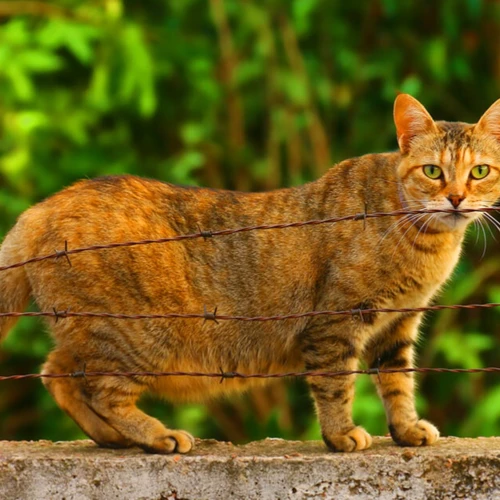
It can be an exciting and nerve-wracking moment when you suspect that your American Wirehair cat might be pregnant. But how can you tell for sure? There are a number of physical and behavioral changes that your cat may exhibit as she progresses through her pregnancy. By paying close attention to these signs, you can confirm whether your cat is indeed expecting and better prepare for the arrival of her adorable kittens. Let’s take a closer look at the various signs your American Wirehair may display during pregnancy.
Physical Changes in Your Cat
During the early stages of pregnancy, there may be very few physical changes in your American Wirehair cat. However, as pregnancy progresses, you may start to notice some of the following physical changes:
- Weight gain: Your cat may start to gain weight as her pregnancy progresses. This is normal, but it’s important to monitor her weight gain and ensure that it’s within a healthy range.
- Enlarged nipples: As your cat’s body prepares for nursing, her nipples may become more prominent and swollen.
- Changes in appetite: Your cat may experience fluctuations in her appetite throughout her pregnancy, and may need to be fed smaller, more frequent meals.
- Increased sleeping: Your cat may start sleeping more frequently and for longer periods of time as her pregnancy progresses.
- Abdominal swelling: As her kittens grow, your cat’s abdomen may become noticeably swollen.
- Behavioral changes: Your cat may start to become more affectionate or seek out more attention from you.
It’s important to note that not all cats experience the same physical changes during pregnancy, and some may not show any noticeable changes until later in the pregnancy. If you have any concerns about your cat’s health or well-being during pregnancy, it’s always best to consult with your veterinarian.
Behavioral Changes in Your Cat
During pregnancy, American Wirehair cats may exhibit various behavioral changes that signal their pregnancy. As an owner, it is important to observe these changes to ensure the proper care and treatment of your cat.
Here are some behavioral changes commonly observed in pregnant American Wirehair cats:
| Behavioral Changes | Description |
|---|---|
| Increased Affection | Pregnant American Wirehair cats may become more loving and affectionate than usual. They may seek more attention from their owner and enjoy being petted or cuddled more often. |
| Decreased Activity | Due to the extra weight and discomfort associated with pregnancy, American Wirehair cats may become less active than usual. They may prefer to rest or sleep more often than before. |
| Nesting Instincts | As the delivery date approaches, pregnant American Wirehair cats may begin to display nesting behavior. This may include collecting objects to create a cozy nest or seeking out a secluded area to give birth. |
| Increased Vocalization | Pregnant American Wirehair cats may meow or purr more often than before, especially when seeking attention or expressing discomfort. Some cats may also become more vocal during labor. |
| Changes in Appetite | During pregnancy, American Wirehair cats may experience changes in their appetite. They may become more picky about their food or crave certain types of food. Some cats may also experience nausea or vomiting. |
| Protective Behavior | As the delivery date approaches, pregnant American Wirehair cats may become more protective of their nesting area and newborn kittens. They may hiss or growl at other pets or people who come too close. |
As an owner, it is important to provide your pregnant American Wirehair cat with comfort and support during this time. Be patient with any behavioral changes and give your cat the space and attention she needs. If you have any concerns about your cat’s behavior or health during pregnancy, consult with a veterinarian for advice and guidance.
Caring for Your Pregnant American Wirehair
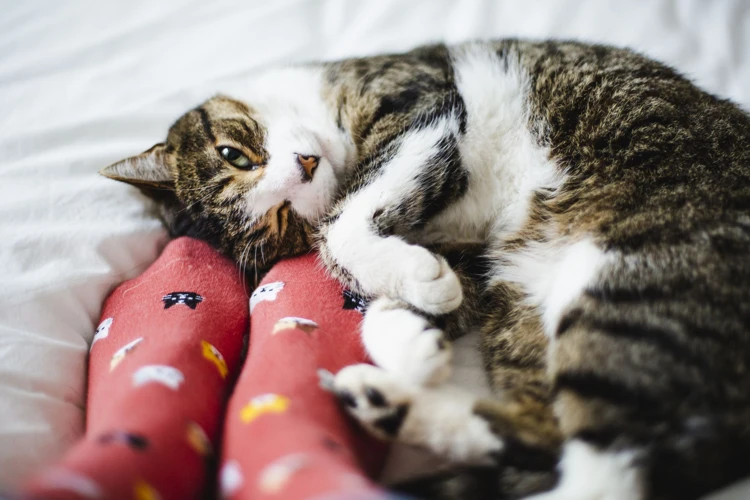
Caring for a pregnant American Wirehair cat can be an exciting and rewarding experience, but it also requires proper attention and care. Your cat’s health and comfort during pregnancy can have a significant impact on the health of the developing kittens, so it’s essential to ensure that your cat is receiving proper nutrition, comfort, and check-ups with the vet. In this section of the article, we’ll discuss the essential steps you should take to care for your pregnant American Wirehair cat and ensure a healthy pregnancy and delivery.
Proper Nutrition
A well-balanced and nutritious diet is crucial for the health of your pregnant American Wirehair cat. During pregnancy, your cat’s nutritional needs will change significantly, and they will require more protein, vitamins, and minerals to support the growth and development of their kittens.
Protein: Your pregnant American Wirehair cat will require a diet that contains a higher percentage of protein to support the development of their kittens. Look for cat food that has a higher percentage of high-quality protein, such as chicken or fish.
Vitamins and Minerals: Essential nutrients such as vitamin D, calcium, and iron play a crucial role in supporting the growth and development of your cat’s kittens during pregnancy. Make sure to choose a cat food that is rich in vitamins and minerals to ensure your cat and her kittens are getting the necessary nutrients.
Water: Pregnant American Wirehair cats need to stay well-hydrated to ensure the proper functioning of their body systems and to support the healthy development of their kittens. Providing fresh, clean water is essential during pregnancy.
Fiber: Fiber is important to regulate your cat’s digestive system and prevent constipation during pregnancy. Look for cat foods that contain a good amount of fiber, such as beet pulp or cellulose.
Omega-3 Fatty Acids: Omega-3 fatty acids are crucial for brain development and overall health of kittens. Look for cat food that is fortified with omega-3 fatty acids, or consider adding a fish-based supplement to your cat’s diet.
To ensure that your pregnant American Wirehair cat is getting the proper nutrition, it’s essential to choose a high-quality, well-balanced cat food that is specifically formulated for pregnant and nursing cats. Consult with your vet to determine the appropriate diet plan for your cat’s individual needs.
Here is a table summarizing the key nutrients your pregnant American Wirehair cat will need:
| Nutrient | Importance | Sources |
|---|---|---|
| Protein | Supports kitten growth and development | Chicken, fish |
| Vitamins and Minerals | Essential for overall health and development | Cat food, supplements |
| Water | Important for hydration and body systems | Fresh, clean water |
| Fiber | Regulates digestive system and prevents constipation | Beet pulp, cellulose |
| Omega-3 Fatty Acids | Crucial for brain development and overall health | Fortified cat food, supplements |
Keeping Your Cat Comfortable
During pregnancy, it’s important to keep your American Wirehair cat comfortable to minimize stress and promote optimal health for both mother and babies. Here are some tips to ensure your furry friend is as comfortable as possible:
- Provide a cozy bed: Your pregnant cat needs a comfortable place to rest and sleep, so providing a soft bed or nesting box lined with blankets or towels is important.
- Keep the litter box clean: A clean litter box is essential to keep your cat comfortable and healthy. During pregnancy, it’s especially important to keep the litter box clean, as pregnant cats may have a weaker immune system.
- Give your cat space: Pregnant cats may become irritable or agitated, so it’s important to give them space to calm down and relax. A quiet, secluded room can provide a safe space for your cat to retreat to when she needs a break.
- Monitor room temperature: Make sure the room your cat is in is not too hot or too cold. A comfortable temperature is around 68-72 degrees Fahrenheit.
- Provide plenty of water: Your pregnant cat needs to stay hydrated, so make sure there is always fresh water available.
- Give your cat attention and affection: Pregnant cats may crave extra attention and affection from their owners. Regularly spending time with and petting your cat can help her feel loved and cared for.
By following these tips, you can help keep your pregnant American Wirehair comfortable throughout her pregnancy, which can lead to a smoother delivery and healthier kittens.
Regular Check-Ups with Your Vet
It is crucial to schedule regular check-ups with your vet during your American Wirehair’s pregnancy. These check-ups will ensure that your cat is healthy and there are no complications. Here are some reasons why these check-ups are necessary:
- Monitoring Your Cat’s Health: Your vet will check your cat’s weight, blood pressure, and heart rate to ensure they are healthy throughout the pregnancy. The vet will also monitor your cat’s temperature and look for any signs of infection or illness.
- Detecting Complications: During a regular check-up, your vet can detect any potential complications that may arise during pregnancy. For example, if your cat has a urinary tract infection, your vet will prescribe antibiotics to prevent the infection from affecting the developing kittens.
- Recommendations for Care: Your vet can provide recommendations on how to care for your pregnant cat based on their individual needs. Your vet may suggest certain dietary requirements or changes that will ensure the health of the developing kittens.
- Easing Your Worries: Pregnancy can be a perplexing time, and it is natural to have concerns about your cat’s health and the wellbeing of the unborn kittens. Regular check-ups with your vet will ease your worries, as your vet can provide answers to your questions and offer support during this exciting time.
Make sure to schedule your American Wirehair’s regular check-ups with the vet throughout the pregnancy to ensure a healthy and positive experience for both your cat and the new kittens.
Preparing for Delivery
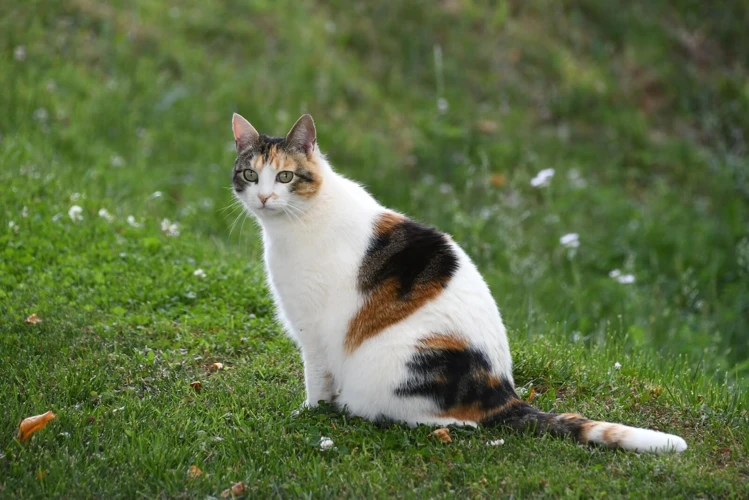
Welcoming a new litter of kittens can be an exciting yet daunting time for any cat owner. But with proper preparation, you can ensure that your American Wirehair cat has a safe and comfortable birth experience. In this section, we will discuss the necessary steps to take in preparing for the delivery of your cat’s kittens. From creating a cat-safe nesting place to recognizing labor signs, read on to discover how you can ease the transition for your furry friend and her soon-to-be-born litter.
Cat-Safe Nesting Place
A cat-safe nesting place is crucial for the safe delivery of your American Wirehair kittens. It is important to create a comfortable and secure environment for your pregnant cat to give birth and nurse her newborns. Here are some tips for creating a safe nesting place for your American Wirehair cat:
| Location: | Choose a private and quiet location for your cat to nest, where she can be away from any noise or commotion. A closet, spare room, or a box with low sides can be great options for your cat to nest. |
| Bedding: | Provide comfortable and soft bedding for your cat to nest in. Use clean blankets or towels to create a cozy and warm environment. Keep in mind that your cat may also prefer to shred the bedding to create a nest that is more comfortable for her. |
| Temperature: | Make sure the nesting area is at an appropriate temperature for your cat and her kittens. Keep the area warm by using a heating pad set on low or by placing a hot water bottle under a blanket. Be mindful not to overheat the area as it can be harmful to your cat and kittens. |
| Food and Water: | Keep a supply of food and water readily available for your cat nearby, so she doesn’t have to travel too far from her nest. It’s essential to ensure she has easy access to food and water, especially during the early stages of motherhood. |
| Cleanliness: | Ensure that the nesting area is kept clean and dry at all times. Replace soiled bedding frequently and dispose of cat waste immediately to maintain a hygienic environment for your feline and her newborns to stay in. |
By following these tips, you can provide a safe and comfortable nesting place for your pregnant American Wirehair cat. This will help your cat deliver her kittens with ease and provide a secure environment for the young ones to feed and grow.
Recognizing Labor Signs
One of the most important things to do when caring for a pregnant American Wirehair cat is to be able to recognize the signs of labor. Our furry friends can’t tell us when they’re ready to give birth, so we need to be able to read their body language and behavior in order to know when the big moment is coming.
Physical Signs
The physical signs of labor in cats are fairly similar to those in humans. American Wirehairs may begin to pant or breathe heavily, pace around their nesting area, and may even vomit or have diarrhea. They may also lick their genital area more frequently than usual as they prepare for delivery.
Another physical sign of labor is the “drop” in the cat’s stomach. As the kittens move into the birth canal, the mother cat’s stomach will appear noticeably lower as they descend into position. This may happen a few hours or even a few days before labor begins.
Behavioral Signs
In addition to these physical signs, there are also behavioral clues that your American Wirehair is in labor. Some cats may become more vocal, meowing or yowling frequently to express their discomfort. They may also become restless, unable to settle down or get comfortable.
If you notice your cat becoming irritable, licking her belly excessively, or pacing restlessly around her nesting area, she may be gearing up for labor. Some cats may hide away in a quiet, secluded spot as they prepare to give birth.
Table:
| Physical Signs | Behavioral Signs |
| — | — |
| Heavy breathing | Vocalizations |
| Panting | Restlessness |
| Nausea/vomiting | Irritability |
| Diarrhea | Excessive licking |
| “Drop” in stomach | Pacing or hiding away |
It’s important to note that not all cats will display every sign of labor, and some may show more subtle indications that they’re getting ready to give birth. The most important thing is to be observant of your American Wirehair’s behavior and seek veterinary attention if you have any concerns or questions during this crucial time.
Delivery and Aftercare
Welcoming new kittens into your home is an exciting and memorable experience for any cat owner. As your American Wirehair cat reaches the end of her pregnancy journey, it’s important to prepare for delivery and provide proper aftercare for her and her newborn kittens. The delivery process can be unpredictable, so it’s important to be vigilant and attentive throughout. In this section, we’ll discuss what to expect during delivery, how to care for the newborn kittens and their mother, and what signs to watch out for in terms of potential health issues. Let’s dive in and learn more about how to provide the best care for your American Wirehair during and after delivery.
The Birth of the Kittens
The moment that your American Wirehair delivers her kittens is an exciting, albeit stressful, time. Here are the steps you can expect during the birthing process:
- Stage One: The first stage of labor usually begins with restlessness and the loss of the mucus plug.
- Stage Two: Once the contractions begin, your cat will enter the second stage of labor where you’ll witness her actively pushing out each kitten from her womb. This stage can last a few hours depending on how many kittens she is delivering. Be sure to monitor her progress during this time, as there is a small chance of complications.
- Stage Three: Once all the kittens have been delivered, your cat will move into the final stage of labor where she passes the placenta. It’s essential to keep the area clean and monitor her for further complications.
During this time, it’s vital to provide a calm and stress-free environment for your cat. Help her as much as possible, but try not to interfere too much with the process. If you notice anything unusual or have any concerns, consult your veterinarian promptly.
Once the kittens are born, and the afterbirth is passed the real work begins. You’ll need to keep the little ones warm and helped them latch onto their mother for their first milk meals. Make sure the mother cat is producing enough milk and keep checking for any signs of distress among the litter. You’ll also need to help the new family stay clean and comfortable, as newborn kittens can’t regulate their temperatures properly.
Ensuring that your cat and her kittens are healthy and comfortable during labor and delivery is crucial for their well-being going forward. With a little attention and care, your American Wirehair will soon have a litter of beautiful, healthy kittens to care for.
Caring for the Newborn Kittens
Welcoming a new litter of kittens is an exciting time for any cat owner. Caring for newborn kittens is a crucial step in ensuring they grow up healthy and strong. Here are some tips for caring for your American Wirehair’s newborn kittens:
- Provide a Warm Environment: Newborn kittens cannot regulate their body temperature effectively, so it’s essential to keep them in a warm environment. Use a heating pad or a hot water bottle wrapped in a towel to provide warmth. Make sure to monitor the temperature to avoid overheating and dehydration.
- Feeding: During the first four weeks of their lives, kittens rely on their mother’s milk. Ensure that the mother is eating a balanced diet with plenty of water to produce enough milk for her litter. If the mother is unable to nurse, you will need to bottle-feed the kittens goat or kitten milk replacer every two to four hours.
- Help with Elimination: Kittens unable to eliminate on their own until around 3-4 weeks old, so they rely on their mother to stimulate bowel movements and urination. You can imitate this process by using a warm, damp cloth or cotton ball to gently stimulate their genitals.
- Cleanliness: Keep the nest clean and dry to prevent infections. Wipe the kittens gently with a warm, damp cloth and dry them thoroughly. Changing the bedding frequently also helps maintain cleanliness.
- Monitor their Health: Keep a close eye on the kittens’ overall health, including their weight gain, behavior, and appearance. Newborn kittens are especially vulnerable, and any sign of illness should be addressed immediately by a veterinarian.
- Socialization: Starting from a young age, kittens need socializing to become well-adjusted and friendly pets. Gradually introduce them to different people and sounds, and provide ample opportunities to socialize with their littermates.
By following these tips for caring for newborn kittens, you can ensure they grow up healthy and happy. Don’t hesitate to speak with your veterinarian if you have any concerns about your litter’s health.
Conclusion
As we approach the end of this informative article on the stages of pregnancy in American Wirehair cats, it’s important to reflect on the journey that both you and your furry friend have gone through. From the initial stage of pregnancy to caring for your pregnant cat and preparing for delivery, the process can be both exciting and nerve-wracking. However, armed with the right knowledge and care, you and your American Wirehair can navigate the pregnancy journey successfully. Let’s take a closer look at the key takeaways from this article and how you can use them to provide the best care for your feline friend.
Summary of American Wirehair Pregnancy Stages and Care
As expecting cat parents, it’s important to understand the various stages of your American Wirehair’s pregnancy and prepare accordingly. Below is a summary of the pregnancy stages and care tips to ensure a healthy mama and litter.
| Pregnancy Stage | Description |
|---|---|
| Initial Stage | The first few weeks of pregnancy. This is when the eggs are fertilized and begin to implant in the uterus. |
| Middle Stage | The middle month(s) of pregnancy when the kittens develop and grow. This is also when your cat’s appetite may increase. |
| Final Stage | The last weeks of pregnancy when your cat may become more restless and search for a nesting spot. Delivery is imminent. |
Keep an eye out for physical and behavioral changes which can indicate pregnancy in your cat. This includes nipples becoming larger and darker, increased appetite, and nesting behaviors. Your vet can confirm the pregnancy through a physical examination or ultrasound.
During pregnancy, it’s important to provide your cat with proper nutrition, including high-quality kitten food. Keeping your cat comfortable with a cozy nesting spot and regular vet check-ups are also important.
As delivery approaches, prepare a cat-safe area for your cat to give birth and monitor her closely for labor signs. After delivery, provide proper care for the newborn kittens and monitor their growth and development. As always, consult with your vet for any questions or concerns.
Understanding the stages of pregnancy in American Wirehair cats and providing proper care can ultimately lead to a healthy mama and litter.
Frequently Asked Questions
What is the gestation period for American Wirehair cats?
The gestation period for American Wirehair cats is typically around 63-65 days. However, this can vary slightly depending on the individual cat.
How many kittens can an American Wirehair cat have?
An American Wirehair cat can have an average litter size of 4-6 kittens. However, litter size can range from 1 to 8 kittens.
When should I take my American Wirehair cat for a prenatal check-up?
You should take your American Wirehair cat for a prenatal check-up as soon as you suspect she may be pregnant, which is usually around 2-3 weeks after breeding.
What should I feed my pregnant American Wirehair cat?
You should feed your pregnant American Wirehair cat a high-quality, premium cat food that is specifically formulated for pregnant or nursing cats. You can also offer her small but frequent meals throughout the day to ensure she’s getting enough nutrition.
How can I tell if my American Wirehair cat is in labor?
Some signs that your American Wirehair cat is in labor include restlessness, nesting behavior, panting or breathing heavily, and visible contractions. You may also notice that she becomes more vocal and seeks out a quiet, private place to give birth.
Do I need to be present for my American Wirehair cat’s delivery?
While it’s not necessary to be present for your American Wirehair cat’s delivery, it may be helpful to provide support and assistance if needed. However, be sure to give your cat plenty of space and privacy during this time.
How can I help care for my American Wirehair cat’s newborn kittens?
You can help care for your American Wirehair cat’s newborn kittens by providing a warm and safe nesting place, gently cleaning the baby kittens as needed, and monitoring their health and growth closely. Be sure to also provide your cat with all the resources she needs, such as food, water, and litter boxes, to ensure she can care for her kittens properly.
When should I have my American Wirehair cat spayed if I don’t want her to have kittens?
You should have your American Wirehair cat spayed before she reaches sexual maturity, which is typically around 5-6 months of age. This will not only prevent unintended pregnancies but also offer numerous health benefits for your cat.
What are some possible pregnancy complications for American Wirehair cats?
Some possible pregnancy complications for American Wirehair cats include miscarriage, stillbirth, difficult labor, and health issues such as toxemia or eclampsia. If you notice any concerning symptoms or behaviors, such as lethargy, loss of appetite, or unusual discharge, be sure to contact your vet immediately.
Should I separate my pregnant American Wirehair cat from my other pets?
It may be beneficial to separate your pregnant American Wirehair cat from your other pets, especially if they are not accustomed to each other. This can help reduce stress and prevent any accidental harm to the pregnant cat or her kittens. However, be sure to provide the pregnant cat with enough social interaction, exercise, and mental stimulation to keep her healthy and happy.

